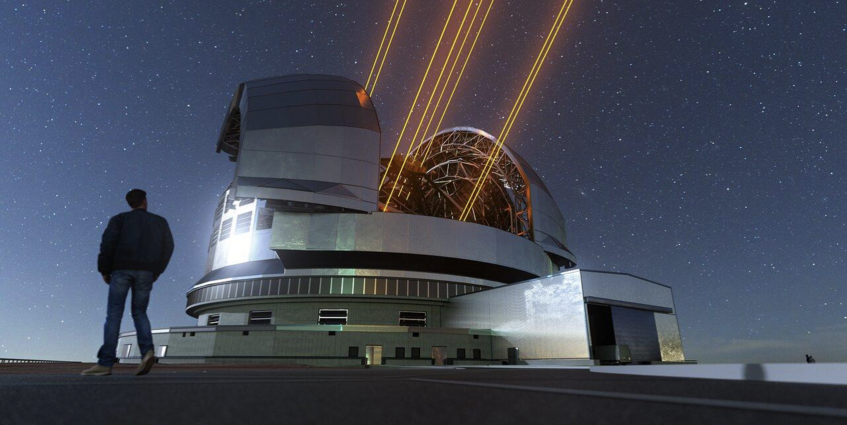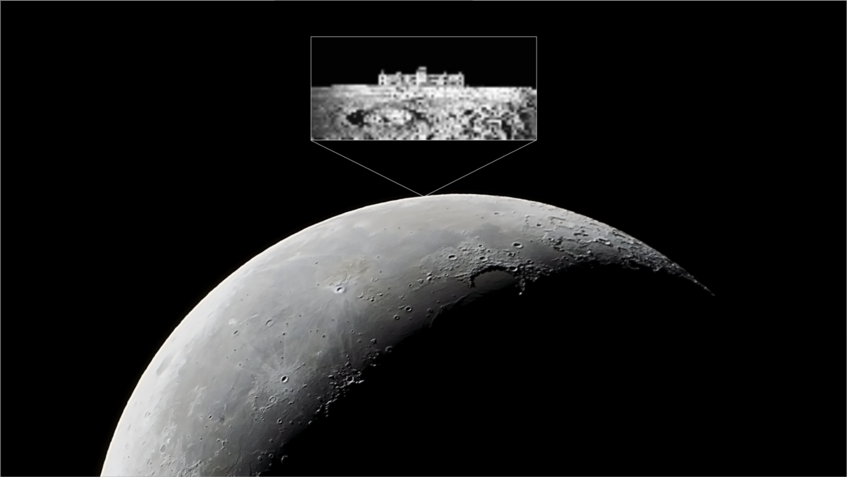Austria and the world’s biggest eye on the sky
On the 21 of September 2021, a meeting was held at the Department of Astrophysics in Vienna to discuss the progress of the Extremely Large Telescope (ELT) of the European Southern Observatory (ESO) in which different Austrian institutions participate. Among the participants in the meeting were Professor Anton Zeilinger, President of the Austrian Academy of Sciences, Professor Heinz Engl, Rector of the University of Vienna, Dr. Daniel Weselka from the Austrian Federal Ministry of Education, Science and Research, Professor Xavier Barcons, Director General of ESO as well as representatives from the University of Vienna, the Johannes Kepler University of Linz, and the University of Innsbruck. Also present were Dr. Lidia Tasca, principal investigator of MOSAIC, a multi-object spectrograph, and Dr. Ric Davies, principal investigator of MICADO, an adaptive optics camera for deep images and an ELT first light instrument.

An artist’s impression of the ELT. Credit: Swinburne Astronomy Productions/ESO
The ELT is a revolutionary ground-based telescope with a 39-meter diameter mirror to observe the universe in infrared and optical light. Austria plays a key role in developing software and instrumentation for this telescope through the A* Consortium, which gathers the Johannes Kepler University of Linz, the University of Innsbruck, the University of Vienna, and the RICAM Institute of the Austrian Academy of Sciences, with the support from the Federal Ministry of Education.
Rector Engl gave an overview of how Austria joined ESO and emphasized the importance of collaborations between Austrian astronomers and Austrian mathematical and data science researchers towards building the large telescopes of the future. Professor Zeilinger shared his “hope of having Austria use the largest telescope in the world”.
Professor Jean Robert Tyran, Vice-Rector for Research and International Affairs of the University of Vienna, highlighted that “no single country can do what ESO does as a collaboration”. Equally important is interdisciplinarity, like the Austrian work for the ELT.
A recount of the Austrian role within ESO was given by Doctor Daniel Weselka, who is “looking forward to this European’s first-light and for the continued flourishing of Astronomy research in Austria”.
The first part of the meeting ended with Professor Barcons giving a general outlook of ESO. He recognized the central role Austrian institutions play in the development of instrumentation and software for the ELT, which are at the heart and soul of such a telescope.

The ELT’s 39-metre ‘eye on the sky’ will capture some of the clearest images ever taken, with a precision reaching 16 times that of the Hubble Space Telescope. Located 3046 m above sea level, on top of Cerro Armazones in Chile, the ELT’s construction has already begun. Once finished, the ELT will unravel countless mysteries of the Southern hemisphere night sky, observing distant exoplanets and nebulae, gazing into the heart of our own Milky Way and all the way out to the first galaxies in our Universe. This 3D rendering of the telescope shows how it will look as it operates during the night, with its laser guide star units. Credit: ESO
Professor João Alves from the University of Vienna presented a glimpse of some of the scientific questions that will be addressed by the ELT. He stressed the impulse Astronomy has experienced in Austria over the last decade and argued that “ESO is becoming a key driver of scientific culture and technology across Austria”.
The challenges and efforts linked with the adaptive optics system of the telescope were exposed by Professor Ronny Ramlau from the Johannes Kepler University of Linz. The algorithms developed have proven to be useful for ophthalmology, showing how basic research can result in applied solutions.
Professor Norbert Przybilla from the University of Innsbruck presented some of the scientific aspects that will be addressed by means of the ELT: the questions how and where are elements produced within galaxies, the improvement of methods to identify intermediate-mass black holes, and enabling the finding and characterization of exoplanets.
Finally, Professor Manuel Güdel from the University of Vienna emphasized the importance of software algorithms to capitalize on the data obtained by the ELT and enable astronomers to research on a broad range of topics: from the first galaxies of the universe to the atmospheres of planets orbiting other stars.
The ELT first-light is targeted for the end of 2027. The worldwide scientific community awaits this event, which will revolutionize our understanding of the universe.

Simulated image showing how the ELT would see the main building of the University of Vienna if it were on the surface of the Moon. The ELT will gather fifteen times more light than the currently best optical telescopes and the resulting images will be fifteen times sharper than those obtained with the Hubble Space Telescope. Credit: University of Vienna
